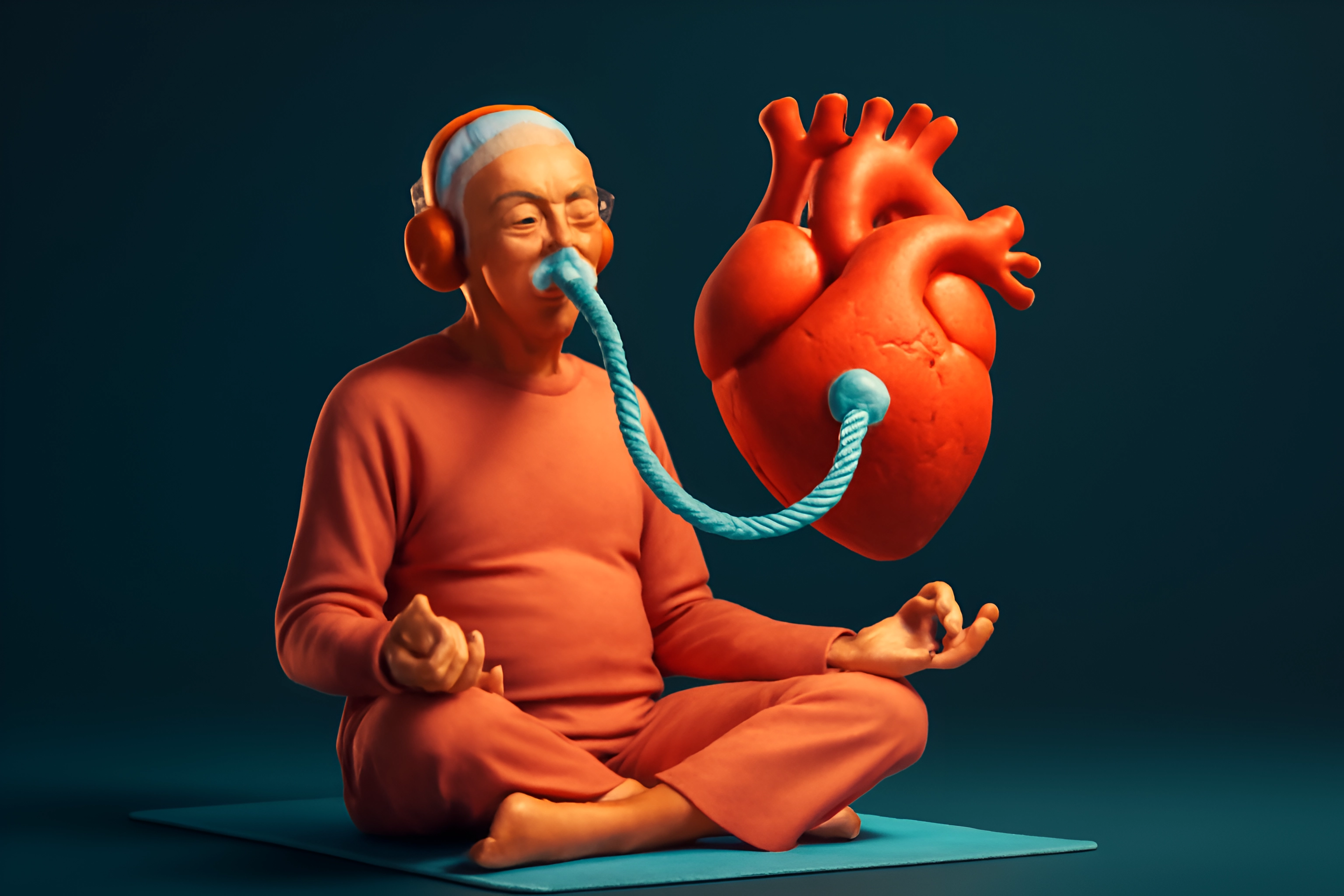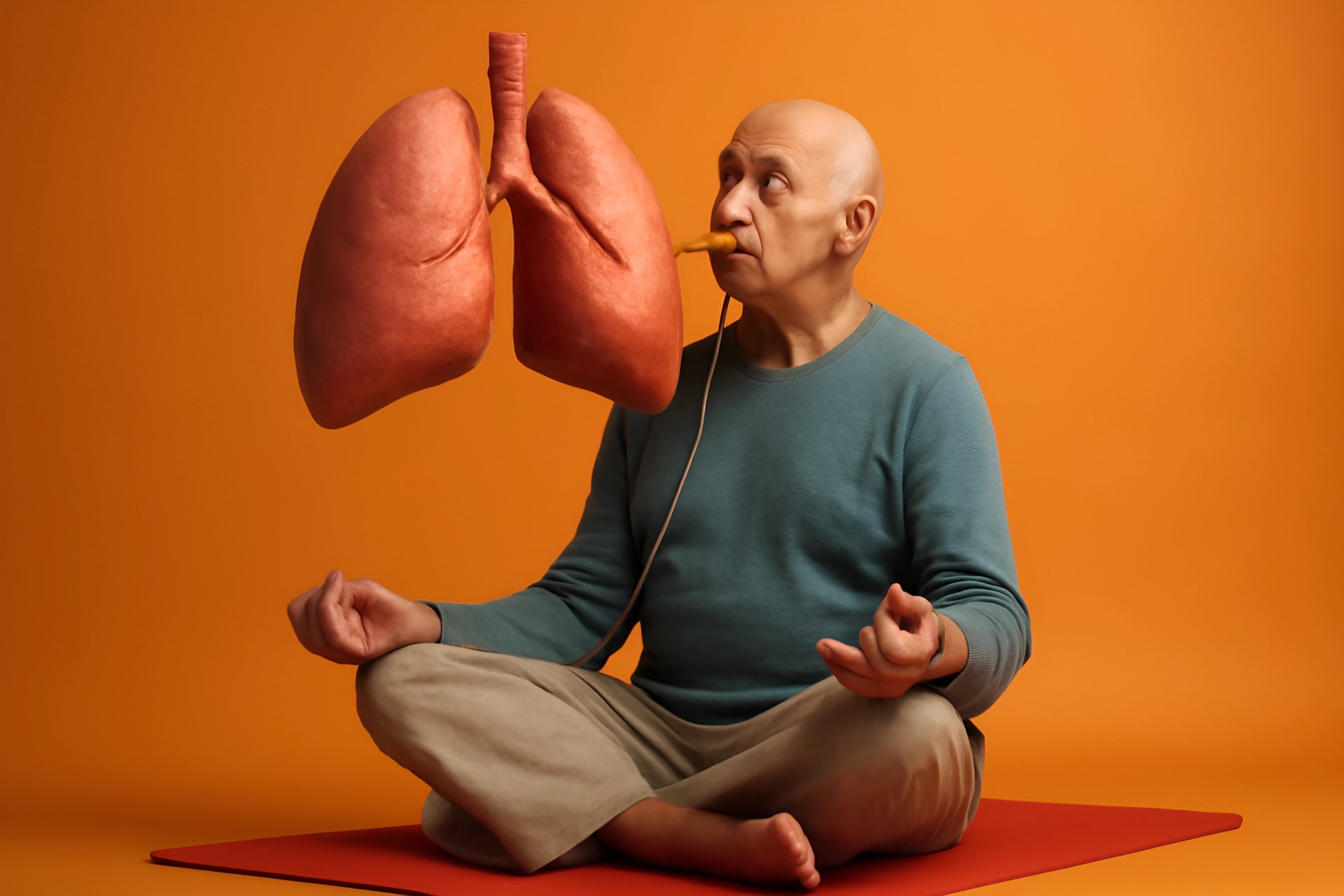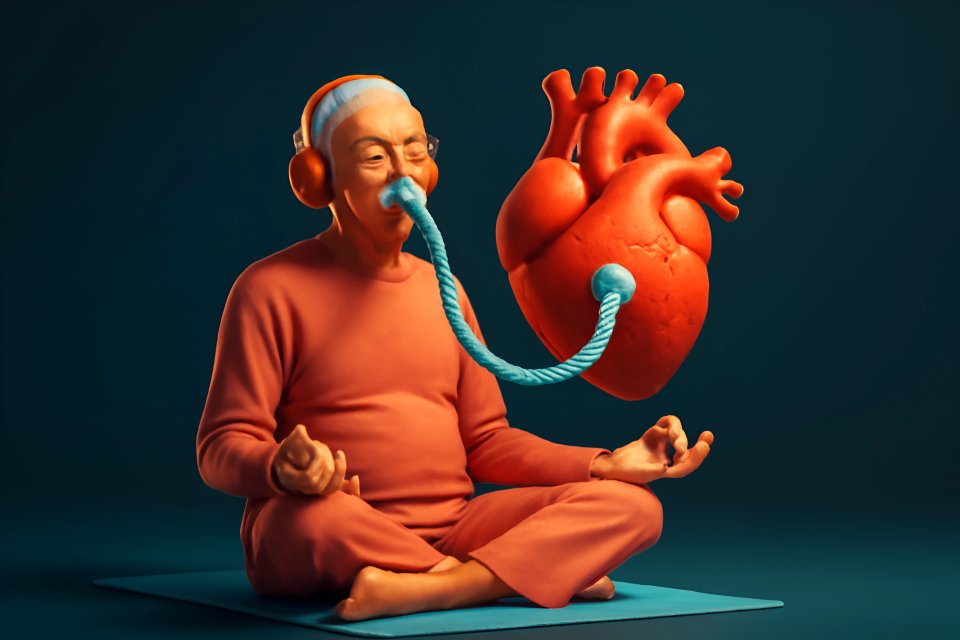
The years after 50 are a whirlwind, aren't they? You’re juggling career finales, celebrating family milestones, and maybe even planning that dream retirement. But amidst this beautiful chaos, a quiet concern often begins to surface—the steady, rhythmic beat of your own heart. Have you ever felt that flutter of anxiety when thinking about the future, or noticed your pulse quicken during a stressful day?
What if I told you that two of the most powerful tools for protecting this vital organ aren't found in a pharmacy, but within your own mind and body? We’re not talking about complex spiritual journeys or impossible-to-achieve states of zen. We’re talking about the simple, profound, and scientifically-backed practices of meditation and intentional breathing.
This is your guide to reclaiming a sense of calm and control over your cardiovascular health. We will walk you through practical, easy-to-learn heart health meditation and breathing exercises for over 50s. These are techniques you can use today to build a foundation for long-term cardiovascular wellness over 50, ensuring you have the vitality to enjoy every moment ahead.
The Powerful Link Between Stress and Your Heart
It’s no secret that stress feels bad, but do you understand what it’s actually doing to your heart? Think of chronic stress as a silent saboteur. When you’re constantly worried or overwhelmed, your body floods itself with the stress hormone cortisol, a chemical designed for short-term, fight-or-flight emergencies.
When this state becomes your daily reality, the damage begins to accumulate. This hormonal onslaught can lead to elevated blood pressure, an erratic heart rate, and systemic inflammation—all direct contributors to heart disease. In fact, the American Heart Association warns that today's prolonged stress may predict tomorrow's heart problems, making it a risk factor as serious as a poor diet or a sedentary lifestyle.
This is why managing your mental state is a non-negotiable part of any serious heart health plan. It’s not a luxury; it’s a necessity for survival and well-being. By actively engaging in stress reduction techniques for seniors, you are directly intervening in this harmful cycle, giving your heart the calm environment it needs to thrive for decades to come.
Your 10-Minute Guide to Heart-Healthy Meditation
Let’s clear up a common myth right now: meditation is not about forcing your mind to be empty. An active mind is a normal mind. The goal is simply to become a gentle observer of your thoughts, not to wage war against them.
This practice is about creating a small pocket of peace in your day, a moment to check in with yourself and release the tension you may not even realize you’re carrying. It’s an act of profound self-care that pays massive dividends for your heart. Research from the Mayo Clinic shows that consistent mindfulness can lead to meaningful reductions in blood pressure and stress, proving that meditation is good medicine.
Are you ready to give your heart this gift? These two simple techniques are the perfect place to start, and they require nothing more than a comfortable chair and a few minutes of your time.
Technique 1: The Mindful Body Scan
The Mindful Body Scan is a foundational practice for connecting your mind to your body. It’s a simple, guided tour of your physical self, designed to notice and release stored tension. By bringing gentle, non-judgmental awareness to each part of your body, you can dissolve the physical tightness that directly contributes to high blood pressure.
This technique helps you identify where you hold stress—a clenched jaw, tight shoulders, a tense stomach—and consciously let it go. It’s a powerful way to interrupt the stress signals that keep your cardiovascular system on high alert.
Here’s how to do it:
- Find a comfortable position, either sitting in a chair with your feet flat on the floor or lying down.
- Close your eyes and take three slow, deep breaths.
- Bring your full attention to the toes on your left foot. Just notice any sensations—warmth, coolness, tingling—without needing to change anything.
- Slowly, like a warm, gentle wave, move your attention up your foot, to your ankle, your calf, and your knee. Continue this process up through your legs, torso, arms, hands, neck, and face.
- Spend just 5 to 10 minutes on this gentle scan, simply noticing and breathing.
Technique 2: Loving-Kindness Meditation
This practice is as beautiful as it sounds, and its effects on the heart are remarkable. Loving-Kindness Meditation is the simple act of directing well-wishes and feelings of warmth toward yourself and others. It sounds simple, but this shift in focus can powerfully counteract the negative emotional states like frustration and worry that strain your heart.
Studies have shown this practice can decrease symptoms of depression and boost positive emotions, both of which are strongly linked to better cardiovascular outcomes. It actively cultivates a sense of peace and connection, which soothes the nervous system and, in turn, your heart. For a deeper dive into how this fits into a larger wellness plan, explore these integrative approaches for stress-free living.
Here’s your simple guide:
- Sit comfortably, close your eyes, and call to mind a feeling of genuine warmth and care.
- Silently and slowly repeat a few phrases directed at yourself, such as:
May I be happy. May I be healthy and strong. May I be safe and at peace. - After a few minutes, extend these wishes to someone you love. Then, extend them to a neutral person, and eventually, to all living beings.
Breathing Your Way to Better Cardiovascular Wellness
Did you know you hold a "magic button" for instant calm? It’s your breath. Deep, intentional breathing is one of the fastest and most effective stress reduction techniques for seniors because it directly stimulates the vagus nerve.
This nerve is the superhighway of your parasympathetic nervous system—the body’s “rest and digest” system. When you activate it through slow, deep breaths, you send a powerful signal to your brain and heart to slow down, relax, and exit high-alert mode. It’s a biological hack that puts you back in the driver’s seat of your own physiology.
While these techniques are powerful, remember they are one part of a complete heart-healthy lifestyle. Combining them with physical activity, like the exercises found in our guide to low-impact cardio ideas for the 50+ crowd, creates a comprehensive shield for your heart.
Technique 1: Diaphragmatic (Belly) Breathing
Most of us walk around taking shallow, inefficient breaths from our chests, which is a hallmark of the stress response. Diaphragmatic Breathing, or "belly breathing," retrains your body to use its primary breathing muscle—the diaphragm—for a deeper, more relaxing breath.
This technique has been proven to lower heart rate and blood pressure almost immediately. According to the Cleveland Clinic, practicing diaphragmatic breathing is a cornerstone of stress management and can significantly improve lung efficiency and reduce the workload on your heart.
Follow these steps to master it:
- Sit comfortably in a chair or lie on your back with your knees bent.
- Place one hand on your upper chest and the other hand on your belly, just below your rib cage.
- Inhale slowly through your nose for a count of four. As you do, focus on letting your belly rise and push your hand up. The hand on your chest should remain relatively still.
- Exhale slowly through pursed lips (like you’re blowing through a straw) for a count of six. Feel your belly fall as you gently press the air out.
- Repeat this cycle for 5 to 10 breaths, focusing on the gentle rhythm.
Technique 2: 4-7-8 Breathing
Developed by Dr. Andrew Weil, the 4-7-8 breathing technique is hailed as a "natural tranquilizer" for the nervous system. This rhythmic pattern is incredibly effective for calming you down in moments of acute stress or anxiety. It’s also a fantastic tool to use before bed to quiet a racing mind.
The specific ratio of the breath forces a slowdown in the heart and floods the bloodstream with oxygen, creating a profound sense of calm. Because restorative rest is so critical for heart repair, using this technique before sleep can be a game-changer. For more strategies, check out our advanced tips for overcoming insomnia in your 50s and beyond.
Here is the simple, powerful pattern:
- Exhale completely through your mouth, making a gentle whoosh sound.
- Close your mouth and inhale quietly through your nose for a mental count of 4.
- Hold your breath for a count of 7.
- Exhale completely through your mouth, making that whoosh sound again, for a count of 8.
- This completes one breath. Inhale again and repeat the cycle three more times for a total of four breaths.
How to Weave Mindful Heart Health into Your Life
Knowing these techniques is one thing; making them a part of your life is another. The secret to success isn’t grand, hour-long sessions. It’s small, consistent daily actions that build a powerful, heart-protective habit over time.
The key is to start ridiculously small. Can you commit to just five minutes a day? That’s it. Consistency is far more important than duration, especially in the beginning. Try "habit stacking"—linking your new breathing or meditation practice to something you already do every single day. For example: "After I pour my morning coffee, I will sit and do my 4-7-8 breathing for two minutes."
Finally, release the need for perfection. Your mind will wander. You’ll get distracted. That’s not a failure; it’s part of the process. The victory is in simply showing up for yourself and your heart, day after day. For more ideas, explore our broader guide on mindfulness and meditation techniques for seniors.
Your Health is in Your Hands (and Your Breath)
Let this sink in: simple, consistent heart health meditation and breathing exercises are not just "nice to have." They are powerful, science-backed tools that can fundamentally change your cardiovascular future, especially for those of us over 50. You have the power to lower your blood pressure, calm your nervous system, and build resilience against life’s daily stressors.
This is the core philosophy of FitOverFifty: it is never too late to take powerful, decisive action for your well-being. These practices are more than just exercises; they are an investment in yourself. They are a daily declaration that your health, your peace of mind, and your vitality are worth protecting. This is a crucial complement to other pillars of wellness, like the ones detailed in our guide to age-defying nutrition and meal planning.
Ready to give it a try? Pick one technique from this guide—just one—and practice it for five minutes today. Notice how you feel afterward. Then, share your experience in the comments below. We can’t wait to hear how it felt to take your health back into your own hands.
















